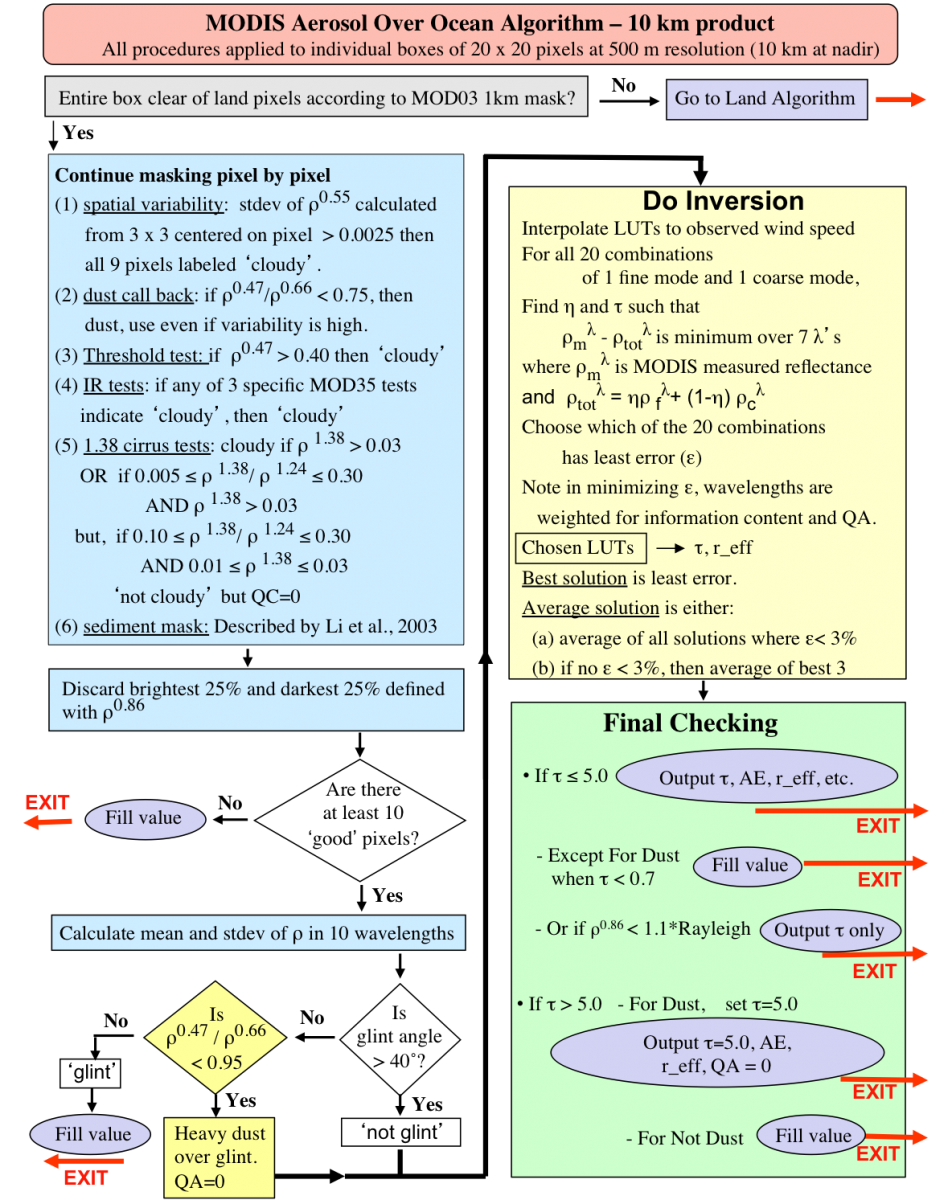Introduction
The history, theory and strategy of the aerosol retrieval over the ocean is described in in Tanré et al., (1997), Levy et al., (2003), Remer et al., (2005) and the C6 updates are described in Levy et al. (2013). The mechanics of the ocean algorithm are shown in the flowchart below. The algorithm is based on a ‘look-up table’ (LUT) approach, i.e., radiative transfer calculations are pre-computed for a set of aerosol and surface parameters and compared with the observed radiation field. The algorithm assumes that one fine and one coarse lognormal aerosol modes can be combined with proper weightings to represent the ambient aerosol properties over the target. Spectral reflectance from the LUT is compared with MODIS-measured spectral reflectance to find the ‘best’ (least-squares) fit. This best fit, or an ‘average’ of a set of the best fits is the solution to the inversion.
Below is a flow chart of the MODIS dark target ocean algorithm for the 10 Km product. The algorithm is also explained below the flow chart in text which is largely excerpted from the MODIS Algorithm Theoretical Basis Document (ATBD).

